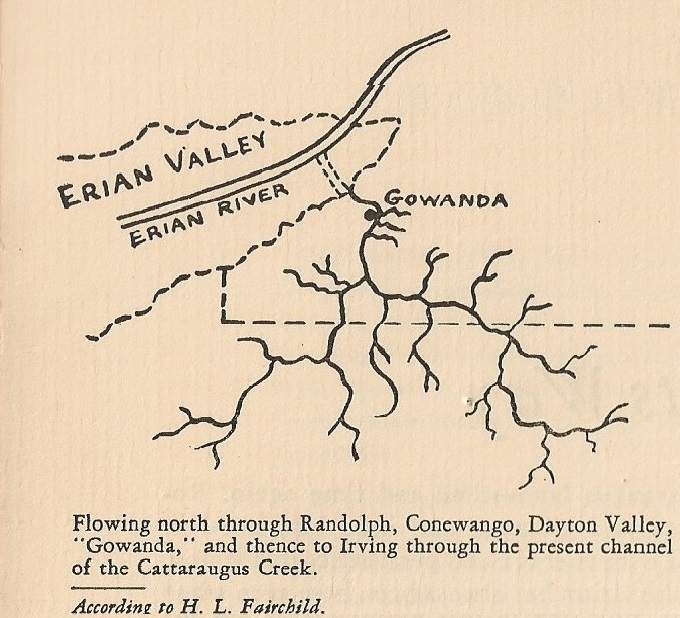Time Has Its Way |
|
|
MANY are the years that pass in review as one contemplates the flow of events which have made Gowanda and the land of the Cattaraugus the thriving community it is today. Events that were historical and even legendary; events that were geological and geodetic; events that took place prior to the coming of the redmen; and events as recent as the year in which this is written. Events, all of them, that have had their culminating influence in the developm~nt of the community and industrial life which centers at Gowanda and radiates so thrivingly for many miles through the valley of the Cattaraugus. Important things have happened in thisCattaraugus land-time and time again. |
Romance and glamour and hardship; hand in hand with courage and persistence and vision. For the vision has always been here even when those who had it, had nothing else. All the elements that make a great story are to be found, plentifully, in this •'beautiful valley between the hills." That was what the word Gowanda meant to the Indians-and it is significant that it still has the same meaning to the thousands of families who have found stability, happiness, progress and contentment within the now pleasant reaches of the Cattaraugus. · The saga of this Gowanda land gains greatly |
|
page three |
|

in interest and importance because it is based on factual rather than fictional sources. One need·not be a Fennimore Cooper to make the Cattaraugus valley resurgent with grandeur. The elements that make it great-historical and natural-exist' here in established fact, as definite as the recurring echoes from its pleasant hills, once an historical ear has been attuned to receive and record them. |
Since this work will have the same individual appeal to you-the reader-as it has to those who are sponsoring its publication, let's turn back the pages of time together. Where, would you say, should a history of Gowanda begin? How far is it of moment to spade up the earth strata in finding a basic starting point for a virile, humanized history of the Gowanda land? Would you go back to Revolutionary days . . . to the British, the French or the Jesuits ... to the coming of the Iroquois, or their predecessors, the Algonkians? Or would you delve still further until you had notched your pen in the crevassed archives cut by the great glacial drifts? Even if you did all that, you would still be thousands of years short of the real genesis of Gowanda. For this captivating countryside of the Cattaraugus had its formation eons of time before the disjointing adventures of the glaciers. It began, in very fact, in that dim Devon• ian age when the shrinkage of the seas created the Americas. Here, sketchily, is Western New York in preglacial days. No Lake Erie, no Niagara River. But there was an Erian River that would be approximately in the center of Lake Erie today. |
|
page four |
|
|
And-believe it or not-it is the Alleghany River which you see flowing into it. Then, as now, the Alleghany had its head waters in northern Pennsylvania but its channel brought it consistently north, flowing through the present locales of Randolph, Conewango, Dayton Valley, Gowanda and-like the Cattaraugus-on through Irving to the Erian basin. In doing so, the Alleghany at that period traversed a course through what is now the present channel of the Cattaraugus from Gowanda to Irving. The glaciers of course |
changed all that. How ruthlessly they did it is manifest to anyone who traces the Great Divide formed by deposits of glacial debris -which starts at Fredonia and extends easterly for forty miles through Forestville and Dayton. It was this Divide that changed the direction of the pre-glacial Alleghany and forced it to turn southwarduntilitjoined che Monongahela to form the Ohio. Lake Erie and Cattaraugus Creek emerged from the distortional forces the glaciers exerted and the resultant changes have their bearing on the topographical and historical nature of the Cattaraugus area to this day. |
|
page five |
|